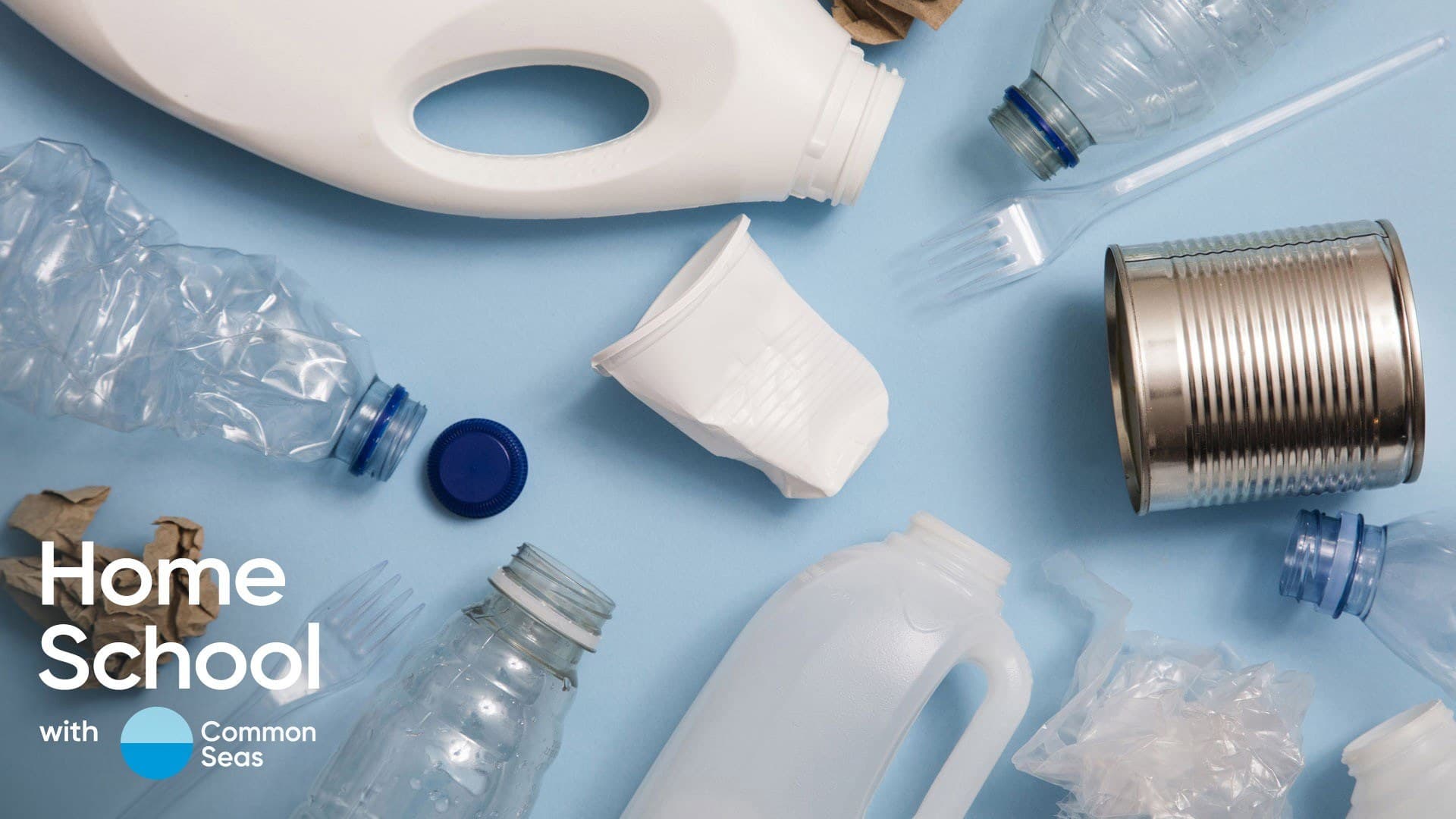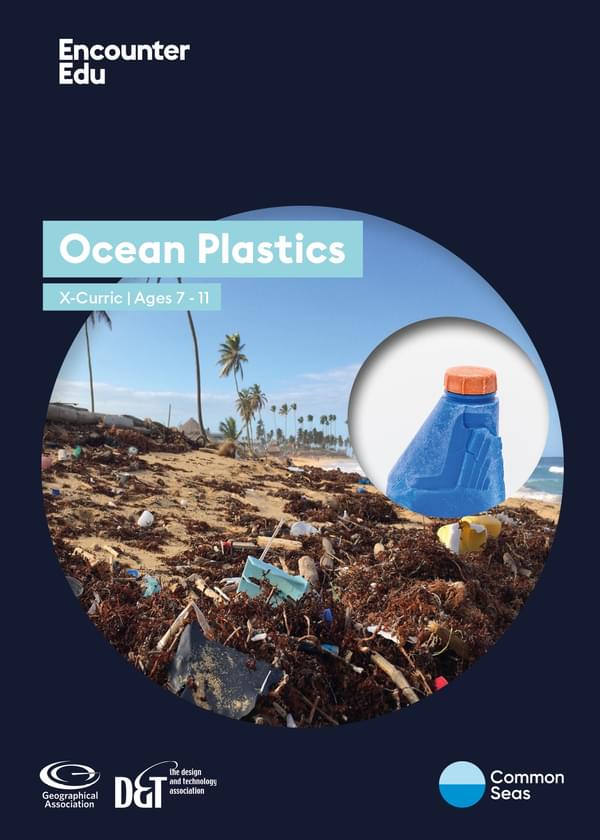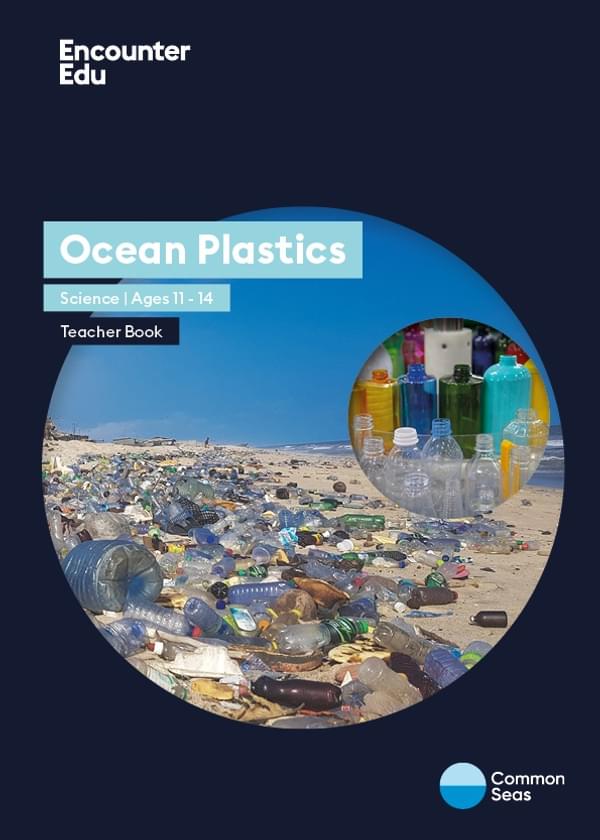Plastic investigator

Can you become a plastic investigator around your house? Did you know that plastic is not a single material, but a range of different chemical substances that all have different properties? In this activity, you will have to try to find as many different types of plastic as possible.
Ages 9+
30 minutes
Part of:
Common Seas Ocean Plastics AcademyMost plastics are made from oil but, by adding different chemicals, you can create different types of plastic, which are called resins. Different resins can be used to make all kinds of products.
You may have seen a number surrounded by a triangle of arrows on some plastic products. This is the resin identification code and tells you what type of plastic it is.
Have a look at this interactive diagram, to learn about seven different types of plastic (resins) you might find at home.
Activity steps
- Study the interactive diagram to learn about the different types of plastic, and then the Plastic Investigator Record Sheet.
- Now try to find an example of each around the house. You can use the resin codes to help you, and you can also think about the examples given on the diagram.
- Read more about each of the different types of plastic and see if these descriptions match with the objects that you have found.
- Did you find any secret plastics hiding out in your home? If you discovered something surprising, why not post a photo of it on Instagram? If you do, please tag us @commonseas and use the hashtag #SeaChampions so we can have a look too. Thank you!
Here are some hints to help find common plastic around the home
In the kitchen, you might find a plastic bottle made from PET (Resin Identification Code 1), with a top made from Polypropylene (RIC 5). Or a milk bottle made from HDPE (RIC 2). In your bin, there might be a plastic bag made from LDPE (RIC 4).
The bathroom is also a good hunting ground for different types of plastic with shampoo bottles made from HDPE (RIC 2), contact lens cases made from Polypropylene (RIC 5) and toothpaste tubes made from layers of different plastics (RIC 7). Sanitary products can be up to 90% plastic, often LDPE (RIC 4).
Elsewhere in the house, you might find a window frame made from PVC (RIC 3) and clothes or bedding made from Nylon or Acrylic both RIC 7.
Reflection
- Why do you think there are so many different types of plastic?
- Why is each type of plastic so good for the item it is used for?
Further ideas
There are two lessons from the Ocean Plastics Teacher Resources that can develop the learning in this activity. How are plastics made? is a materials science lesson for ages 11-14. For ages 7-11, try What are plastics? Part two.
Safety guidance
- Searching for different plastics around the house may need to be supervised for younger children.
- If there are likely sources of plastic that are ‘out of bounds’ such as the recycling collection, make sure these are briefed in advance.
- If you are posting work on social media, this should be done via a parent, guardian or school account for children under the age of 13. Children over the age of 13 should still be supervised by an adult. Check out the Thinkuknow website for more guidance on online safety.
Brought to you by


Cross-curricular | Ages 7-11
Ocean Plastics
Ocean Plastic ages 7-11 unit is a KS1 teacher resource that introduces students to the issue of plastic pollution. Students study materials, their properties and are inspired to enact change in their communities.

Science | Ages 11-14
Ocean Plastics
Ocean Plastics Science ages 11-14 unit is a KS3 teacher resource combining both biology and chemistry. Students discover the journey plastic takes from manufacture, use, and disposal into the ocean. Included are teacher resources that allow students to emulate real research conducted by The University of Plymouth.
